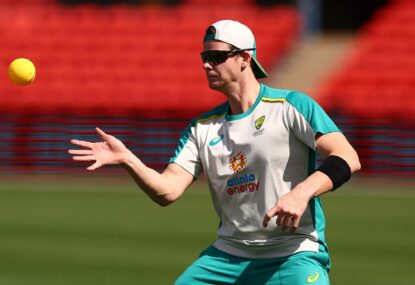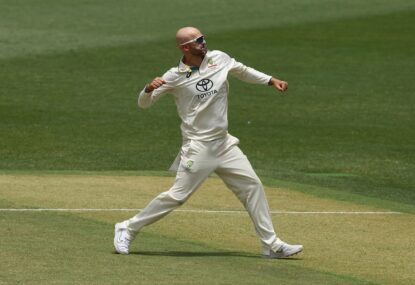The first Ashes series I followed was in 1970/71, which as any cricket aficionado would know, was a bittersweet experience for Aussie cricket fans.
The bitter was losing the series 0-2 mainly through the fiery thunderbolts of John Snow and the very broad bat of Geoff Boycott. Plus the tough, astute and uncompromising captaincy of Ray Illingworth.
The sweet was the unearthing of future great talent, particularly in the ‘holy trinity’ of Greg Chappell, Rod Marsh and Dennis Lillee. And in the final test, Australia found a future great captain in Ian Chappell.
In 1968, I became aware of the Ashes series being played in England, but most of my cricketing interest burgeoned only as that series was drawing to a close. 1970/71 provides me with much more clarity.
1970/71 will not be remembered as a great series. The batting was generally slow, especially from the Englishmen. And apart from Snow, and the late introduction of Lillee, neither side appeared to many bowlers of penetrating depth. But it still had its moments.
In the First Test at Brisbane, Australia batted first reaching 433, losing their last eight wickets for 29 runs! Keith Stackpole scored 207 and Doug Walters 112, while Snow captured 6-114.
Later pictures showed Stackpole clearly run out at 24. England replied with 464, no centuries, but three 70s and a 50 ensuring their lead. In their second innings, Australia collapsed for 214, with skipper Bill Lawry hanging in for 84, and Ken Shuttleworth taking 5-48.
The match ended in a limp draw.
In the Second Test at Perth (the first-ever Test in Perth), Greg Chappell scored a wonderful 108 on debut, partnering Ian Redpath who hit his highest test score of 171. Australia had replied with 440 to England’s 397 with Brian Luckhurst hitting 131 and Boycott 70.
In their second dig, England declared at 6 for 287, John Edrich remaining unbeaten on 115 and Boycott adding another 50.
This Test also ended in a tame draw.
The Third Test in Melbourne (over New Year) was washed out. Controversy raged for years as to whether this test should be recognised, on the technicality that the captains had tossed for right to bat or field first and chosen their 12th men.
Eventually commonsense prevailed and the test was declared a non-event, but this happened many years later! What did happen however, was a hastily arranged first ever international limited overs match (40 x 8 ball overs each), which led to the first World Cup being staged in 1975.
The Third Test (previously the Fourth) was held in Sydney and Australia was crushed by 299 runs. England batting first, made 332, with Boycott scoring 77 and Edrich 55. In their second dig, Boycott finished unbeaten on 142, and Basil D’Oliveira a 50 in a score of 5 declared for 319.
Australia managed just 236 and 116. Redpath and Walters both managed 50s in the first dig, while skipper Lawry carried his bat for 60 in the second dig, in which Snow crushed the Aussies with 7-40.
The Fourth Test was a quickly reconvened fixture in Melbourne, and another yawning draw. Australia hit 9/493 and 4/169 to England’s 392 and none for 161.
Ian Chappell hit 111 for Australia, while Luchurst (109) and D’Oliveira (117) hit centuries for England. In their second dig, Boycott was unbeaten on 76 and Edrich on 74.
A curiosity of this match was skipper Lawry declaring Australia’s 1st innings closed, with keeper Marsh unbeaten on 92. At this point, no Australian keeper had hit a test century, and Marsh had to wait another two seasons before fulfilling this (then) rare honour!
The Fifth Test was played in Adelaide, and yet another draw. England scored 470 and 4/233. Edrich scored his second century, while Boycott and keith Fletcher added 50s. In the second dig, Boycott scored his second unbeaten century.
Australia replied with 235 and 3 for 328, with Stackpole the best with 87 and 136. Ian Chappell also hit a century in the second dig with 104.
The highlight for Australia in an otherwise drab Test, was the debut of Lillee, capturing 5-84 in his first Test.
The Sixth and final Test was held in Sydney, with Australia losing both tests in the harbour city. The big news going into the test was the sacking of captain Bill Lawry, who only found out via radio! The selectors didn’t bother giving him the personal courtesy of being sacked.
Note the chairman of selectors was one Sir Donald Bradman. He was certainly a prickly and contrary character when he so chose to be.
Australia had its chance to win this match after leading on the first innings, but collapsed in their second innings, to lose by 60 runs.
England made 184 and 302 to Australia’s 264 and 160. For England, Edrich and Luckhurst scored second innings 50s, while for Australia, Redpath and Greg Chappell scored first innings 50s, and Stackpole in the second innings.
Although beaten, new skipper Ian Chappell showed a refreshing abilty to attack at all costs. In the bowels of defeat, nevertheless a bright new dawn beckoned!
This was the second test I ever attended live, having also attended a day of the Fifth Test of the 1968/69 series against West Indies. I just happened to be there the day a drunken Aussie fan grabbed Snow’s shirt-sleeve, prompting England to walk off the field, and a shower of both empty and full beer cans to be thrown onto the field.
I was no more than about 40 metres from the centre of the action on the fence line. For a 14-year-old, I found this all to be wonderfully exciting.
For England, their top three batsmen dominated. Boycott averaged 93.86 with 2 centuries; Edrich72.00 with 2 centuries and Luckhurst 56.88 with two centuries. Snow was the outstanding bowler with 31 wickets at 22.84.
I also got to see the best keeper-batsman I’ve ever seen in Alan Knott. He averaged 31.71 with the bat and took 21 catches and three stumpings. Derek Underwood was steady with 16 wickets at 32.50, while a young Bob willis (in four Tests) captured 12 wickets at 27.42.
Illingworth proved his all-round worth of batting, bowling and captaincy. He averaged 37.00 with the bat, took 10 wickets at 34.90 apiece and led England to a 2-0 series victory. he was the best English skipper since Douglas Jardine.
For Australia, Stackpole led the batting with 52.25 and 2 centuries, followed by Redpath at 49.70 and one century. Despite finishing third on the batting averages with 40.50, Lawry was still sacked.
Apart from Lillee capturing eight wickets at 24.88 apiece in his first two Tests, the Australian bowling otherwise lacked penetration.
And so this was my first exposure to Ashes cricket.
One final warning for those looking too deeply into pre-test form. Back in 1970/71, England were written off as one of the weakest teams to hit our shores. They generally had shown little enthusiasm in their pre-Test series matches.
But once the first Test was under way, it was a different story…





































































































